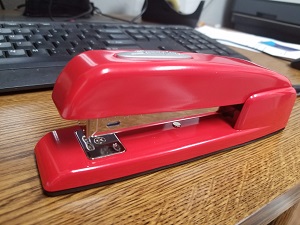Using Capital Gains and Losses to Help With a Roth Conversion

photo by: jb
Most of the time, when analyzing the prospect of a Roth conversion, the best outcome occurs when the tax is paid from non-IRA sources. For many folks this shoots down the entire prospect, as there is no available cash outside of IRAs to use to pay the tax on the conversion. Taking the cash from the IRA in the form of a distribution can result in a 10% penalty, which can kill the whole plan, making it far more expensive in the long run.
One source of funds that you may not have considered is within your non-IRA investment accounts – especially if you have inherent capital gains and losses (even moreso if you have carried-over capital losses that wouldn’t otherwise be utilized readily).
Offsetting Gains With Losses To Produce Cash
Here’s how it works: You sell your “loss” positions, establishing a capital loss for tax purposes. Then you can sell your “gain” positions in like amounts, giving yourself a tax-free source of cash, since the loss will offset the gain for taxation purposes.
For example – imagine that you have a $100,000 IRA that you’d like to convert to Roth. Running the numbers, you’ve come to realize that the conversion will cost $25,000 to complete. In addition to the IRA, you also hold some non-IRA money, in the form of two investments. One of these investments has an inherent loss of $20,000, and the other has an inherent gain of $30,000.
By selling out of the “loss” position completely and selling just enough of the “gain” position to offset the tax loss you’ve realized, you have effectively created a tax-free source of income in the amount of $20,000. This still leaves $5,000 if you’re planning to convert the entire amount.
After you’ve finished with your conversion activities (and after 30 days has passed so that you don’t run afoul of the wash sale rules), you can re-invest the leftover money in those same investments, keeping your allocation at least similar to what it was before.
At this stage you have three choices, assuming you don’t have an extra $5,000 laying around:
- You can choose to only convert a portion of your IRA – the amount that you can generate tax-free money to pay tax upon. In our example, this would be $80,000.
- You can use more of the cash that you freed up from the sales of your non-IRA gain and loss holdings. After all, the tax rate on the capital gains would only be 15%, so that would keep the extra costs at a minimum.
- You can convert the entire amount and take distribution of the additional $5,000 to pay the extra tax. Actually you’d need to pull out $5,500 in order to pay the penalty on that amount that you’re distributing, if you’re under age 59½.
Of these three, I’d recommend option 2, which is the outcome where you complete the conversion of the entire amount without having to pay additional tax or penalty on the money that you’re using to pay the tax on the conversion. Yeah, that last sentence belongs in a museum. Happy converting!
One thing more to consider
As you consider a conversion, you need to keep in mind that the overall income tax on your return will be increasing. In general this just means you’ll have to pay more tax. More income equals more tax, simple as that, right?
Unfortunately there are other things to keep in mind. The most costly is your healthcare insurance – primarily if you’re on Medicare or an ACA (marketplace-subsidized) insurance plan. Each of these two types of healthcare insurance have income limitations that could apply as your income increases. Be sure to check on the limitations of your policy (or program) before you make the leap.
The post Using Capital Gains and Losses to Help With a Roth Conversion appeared first on Getting Your Financial Ducks In A Row.
source https://financialducksinarow.com/2766/using-capital-gains-and-losses-to-help-with-a-roth-conversion/
Comments
Post a Comment